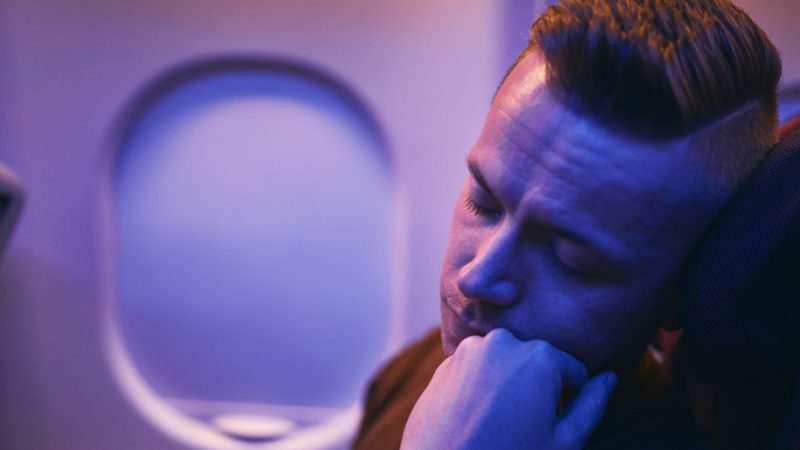Flight Night? Sleep Tight
Tips on how to catch the best ZZZ’s when flying
April 15, 2021

As air travel kicks up and more people gear up to take to the skies, no doubt many of those trips will involve late nights at the airport and overnight sessions in the air trying to find enough comfort in one position or the other to give the body some rest.
Air travel can be difficult, but sleeping on a plane can be even more challenging. However, with a little preparation, night flyers can turn that jet lag around and arrive at their destination rested and ready to go. Here are some helpful tips for preparation and onboard practice that will promote a restful flight.
1. Get picky. Plan ahead and pick the best seat for sleep. Those are going to be in the front of the plane by the window, where there is a little more room. Once the flight takes off and you’re able to move around the cabin, grab your carry-on and use it to elevate your feet. This will help with blood flow and make you feel more comfortable. Stay away from aisle seats and any seats in the back row – you won’t get any sleep otherwise!
2. Cancel the noise. Wear earplugs or noise cancelling headphones. A recent study shows 51% of people said earplugs or noise cancelling headphones were the number one choice to help them get their best sleep while traveling. You can also play some white noise or meditation sounds, such as an app called NamaSleep.
3. Secure, secure, secure. Many airlines are doing away with reclining seats, which makes it difficult to sleep. Leadley’s solution? Use a thin scarf to tie around your forehead and headrest to secure your head so it doesn’t bob while you fall asleep (the scarf also doubles as an eye mask, blocking that light!).
4. Block the light. Wear an eye mask – light disrupts your circadian rhythm, preventing you from falling asleep, so an eye mask is a must!
5. Pack it up. Gone are the days when airlines passed out blankets like candy, so make sure to bring your own! You can also bring a heavy zippered sweatshirt or coat – turn the sweatshirt around and wear it backward. Your arms stay warm and your “blanket” won’t fall off.
6. Hydrate. Make sure to drink plenty of water and avoid salty foods and alcoholic beverages. Airplanes are a very dry environment, which naturally dehydrates you. This will cause you to feel fatigue, headaches, nausea and more. Leadley suggests drinking at least eight ounces of water every hour you are in the air for flights longer than three hours. If you can’t fly without some liquid courage, make sure to follow it with a glass of water.
7. Check right under your nose. Antibiotic ointment helps with dryness and blocks any irritants that may be floating around, so make sure to rub some just under your nostrils right before you go to sleep.
Lauri Leadley is a clinical sleep educator and president of Valley Sleep Center based in Glendale, Arizona.




